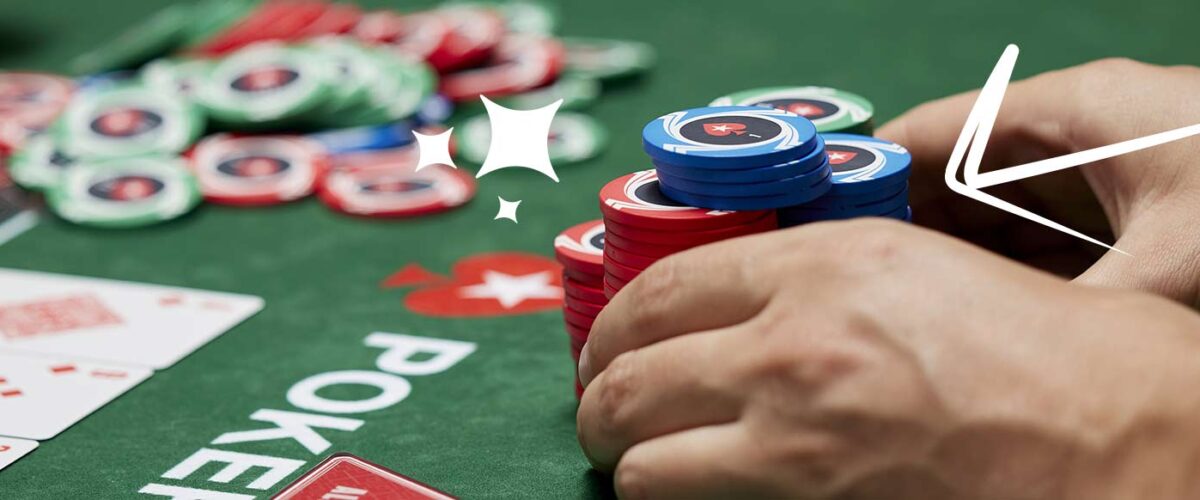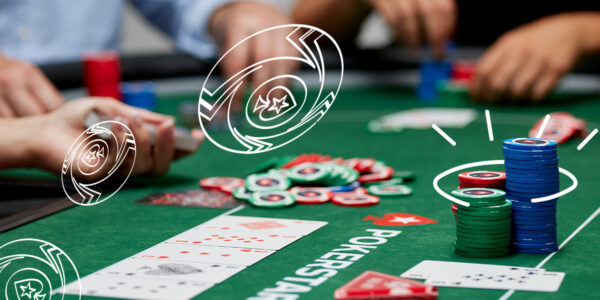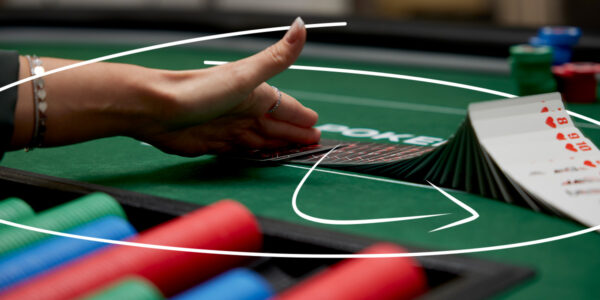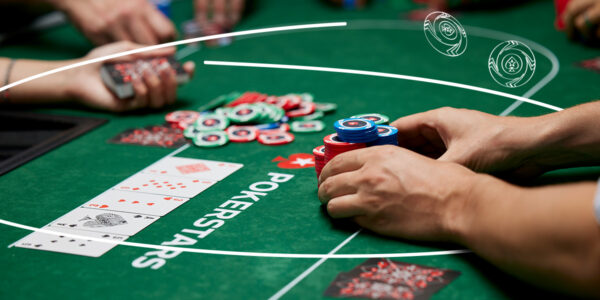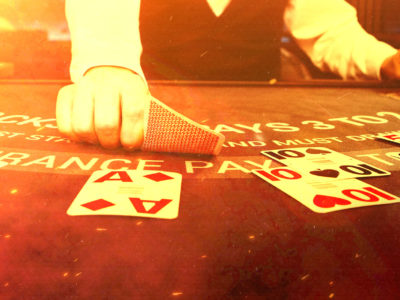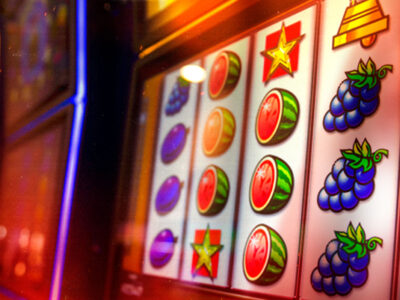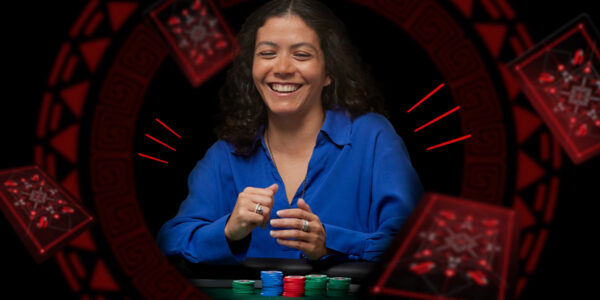How to Play with 20 Big Blinds
Learn with Lex is the perfect fit for beginners in poker. In this video Lex will show you how you should play with your 20 big blinds stack.
Playing a 20 big blind stack in an online tournament
If you’re new to poker, working in big blinds can be a little confusing at first. Big Blinds are a unit of measurement to determine the size of the current big blind. There is some simple math to calculate your stack in big blinds.
Example: Your stack is 2000 chips, the small blind is 50 and the big blind is 100. You simply divide your stack by the big blinds. So, 2000 / 100 = 20 Big Blinds
Fortunately, when playing on PokerStars, seeing your stack in BB’s can be calculated automatically.
Viewing your Stack as Big Blinds on PokerStars
- Launch the PokerStars Client and select settings.
- Open the Table Appearance Menu.
- Select Show Values in big blinds for Tourneys.
- Stack Sizes will now be shown as big blinds.
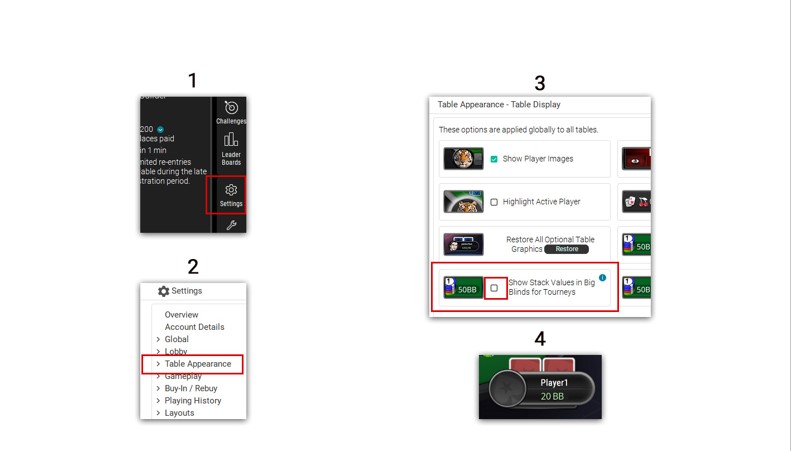
Note: Once this is setup you can left click on your stack at any time to swap between showing your stack as chips or big blinds.
How to play 20BB stack
If you play poker tournaments regularly, you’ll often be in the situation where you lose a few big pots early on and your stack size drops to around 20 big blinds.
Playing a 20 big blind (20BB) stack, you still have other options rather than just going all-in. We need to investigate these techniques and strategies that can give you the best opportunity to grow your stack.
It’s a tricky situation because we ideally don’t want to fold all our hands down to a 10 big blind (10BB) stack, but we also don’t want to overplay our stack and go bust. So, what can we do to get the most out of a 20BB stack?
Don’t play too passive
It can be tempting to tighten up and pray for a big hand like AA or KK to come along, however, the odds of being dealt Aces is 1 in every 221 hands and by then your stack will likely be blinded out. And, even when you are dealt Aces, you’ll end up losing around 15% of the time.
Instead of waiting around for the perfect situation, create them.

Use position to your advantage
Focus on position as much as possible; by now, you should also have some information on how your opponents are playing at the table.
By focusing on hands in later position, you’ll have more information and control of the pots you choose to play. This gives you the opportunity to either attempt to steal the blinds with small raises or small re-raises to force your opponents to fold without risking your entire stack. Of course this gives you the option to Raise Fold your smaller hands.
Adjust your play to your opponents
Play the player. Be aware of their playing style, betting patterns and stack sizes. Everyone plays differently, some players with a huge 200BB stack will start playing looser and taking more risks, whereas other players may continue to play a tight solid game.
The same is true for short stacks. Some players will wait for a big hand and others will give up and call with anything. Your job is to trying work out which type of player they are.
Example 1: Tight player in the big blind.
If the player in the big blind is an extremely tight player (for example, you’ve seen them fold their big blind regularly) and everyone has folded round to you on the button, then you can usually get away with a small raise to steal the blinds. If of course they call, you’ll have to give up on the hand unless you improve on the flop.
Example 2 Loose player in the big blind.
If the opposite is true, and the big blind is a loose player who’s fighting for every pot, you’ll need a much stronger hand to enter the pot with. This is where your mental notes will help you, for example, what type of bets are they willing to call preflop? Would they call an all-in? Waiting for a big hand and increasing your bet sizes may put you in a spot to double up against this type of opponent.
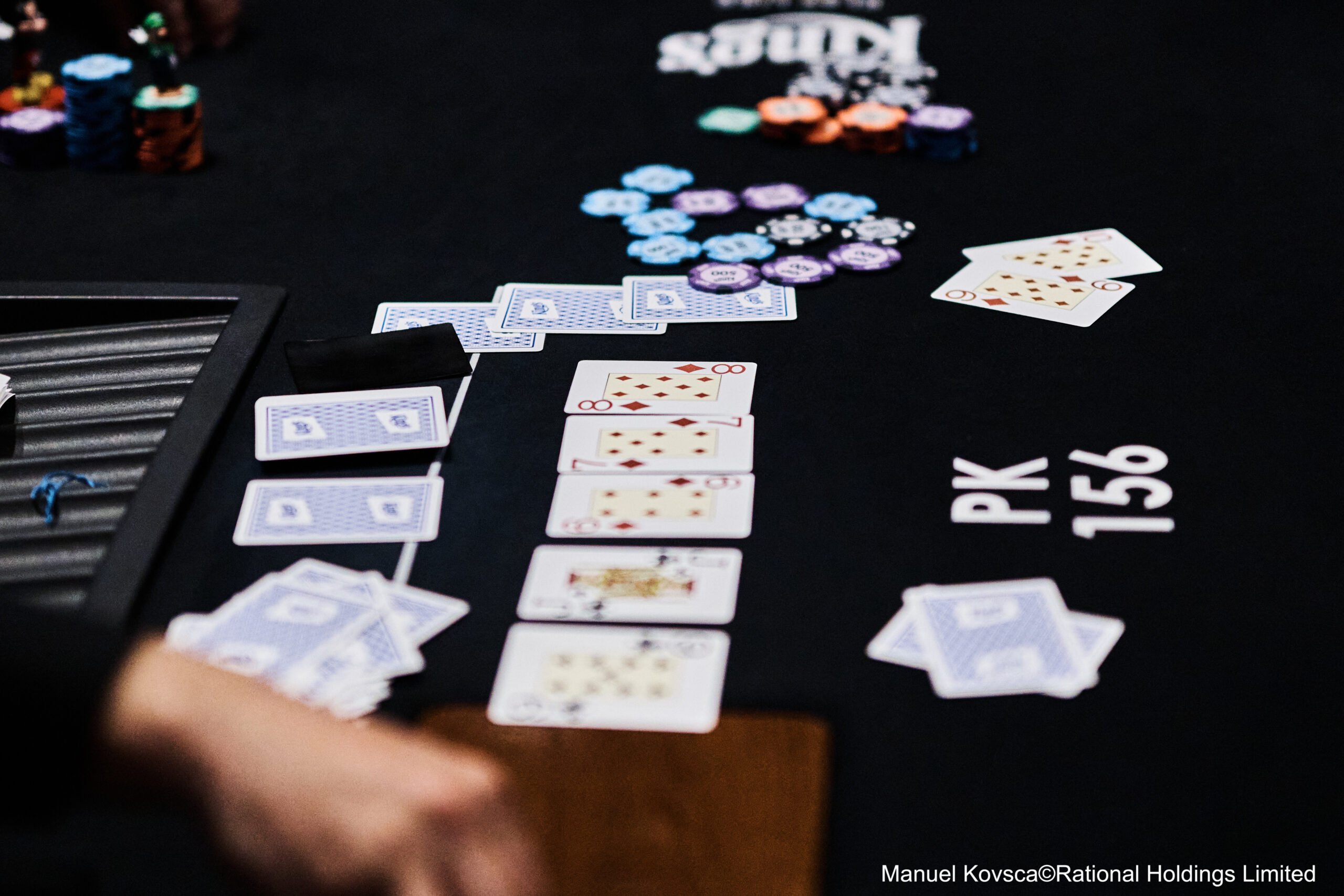
Opponent stack sizes
The smaller your opponents’ stack, the wider your range can be. Of course, you also must adjust this range based on your opponent and this is only a base guide.
Example: You’re on the button with 20 big blinds and a player in middle position moves all-in.
- Opponent stack size is 20 BBs* = you can call with AA, KK, QQ, JJ, AKs, AKo
- Opponent stack size is 10 BBs* = you can call with AA, KK, QQ, JJ, TT, 99, 88, 77, AKs, AQs, AJs, AKo, AQo
- Opponent stack size is 3 BBs* = you can call with AA, KK, QQ, JJ, TT, 99, 88, 77, 66, 55, 44, AKs, AQs, AJs, ATs, A9s, A8s, A7s, A6s, A5s, A4s, A3s, AKo, AQo, ATo, A9o, A8o, KQs, KJs, KTs, K9s, KQo, KJo, KTo, QJs, QTs, JTs
*as you can see above, the smaller your opponents’ stack size is the wider your range to call with should be.
Of course, there are many other components of information you should factor in when deciding whether to call or not:
- Are bounties in play?
- What are the players/stacks behind you like?
- Are you near the money or in the money?
- Is there a pay jump soon?
- Perhaps the player who moved in for 3 BB’s just lost 100 BB’s in the pot before?
The more information you can piece together the better decisions you’ll make in these situations.
Your table image
How would your opponents who are paying attention perceive your play at the table? If you’ve played a tight game and only shown down strong hands, you’ll likely get away with more bluffs, allowing you to steal a few pots.
If you’ve been playing lots of pots, attempting bluffs and getting caught red handed, you’ll be in a great situation to double up when you have a strong hand, because your opponents will be less likely to believe you.
Bubble strategies
Bubble play with a 20 BB stack is very player dependant. If the min cash is something that will really help increase your bankroll, or you’ve satellited your way into a bigger event you cannot usually play, then playing as tight as possible to try and min cash is probably the way to go.
Review the tournament lobby, see how many players have smaller stacks than you and perhaps open a few of those tables up so you can watch how the smaller stacks are playing.
If on the other hand you’re more interested in building your stack and making a deep run in the tournament, you’ll have to increase your risk factor. The safest way is targeting the stacks/players with less chips than you, who cannot eliminate you should you lose the pot.
As discussed above, you’ll also need to use your table image on the bubble.
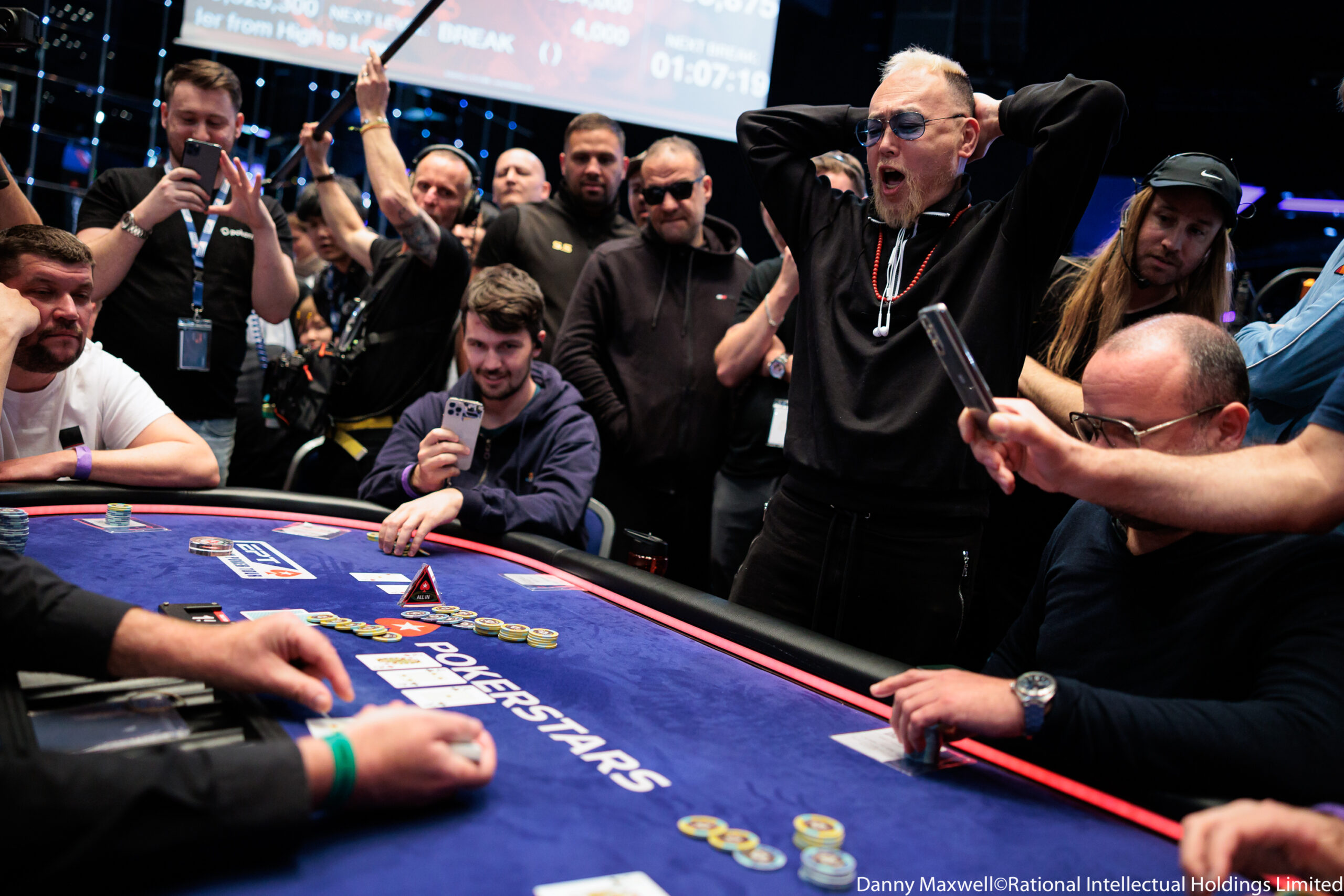
Pre-bubble strategy
A good pre-bubble strategy if you’ve got the opportunity is to keep an eye on the tournament lobby and before any players are even thinking about the bubble, you start to tighten up your table image. This way, by the time the bubble appears, you’ll have a nice tight table image, you can use to steal many more pots on the bubble with small raises and re-raises or against smaller stacks without risking your entire stack.
Focus and Patience
Staying focussed and patient is always a key skill to have in poker, especially when your stack size is on the lower side.
Never throw in the towel or get frustrated and play your best possible game right to the end. That end will sometimes be in the next few hands, but every occasionally, this will take you deeper and deeper into the tournament rankings. And who knows, once you’ve mastered the 20BB stack, even a few final tables.
Poker Terminology used in this Article.
- Big Blind: A forced bet that players must make in each round. The big blind is equal to the minimum bet for that round, the big blind is twice the size of the small blind.
- Small Blind: The small blind is half the size of the big blind and situated to the right of the big blind.
- Stack: Amount of chips a player has in front of them at the table.
- Position: Is the order in which players act during a hand. The further away you are from the dealer, the better your position is, also know as late position, giving you more information on your opponents.
- Starting Hand: In Hold’em this is the first two cards dealt to each player at the start of the hand, also known as Hole Cards.
- Bluff: When a player makes a raise or bet without a strong hand to try and make their opponents fold.
- Raise: To increase the amount of the previous bet.
- Re-Raise: To make a raise after an opponent has already raised.
- Bubble: Describes any significant threshold in a tournament. The most common tournament bubbles are the initial money bubble, and the final table bubble.
- Short Stacked: A player with a small stack in a tournament.
- Bankroll: Is a responsible budget set aside for poker, separate from your living expenses and financial responsibilities.
View Other Blogs




